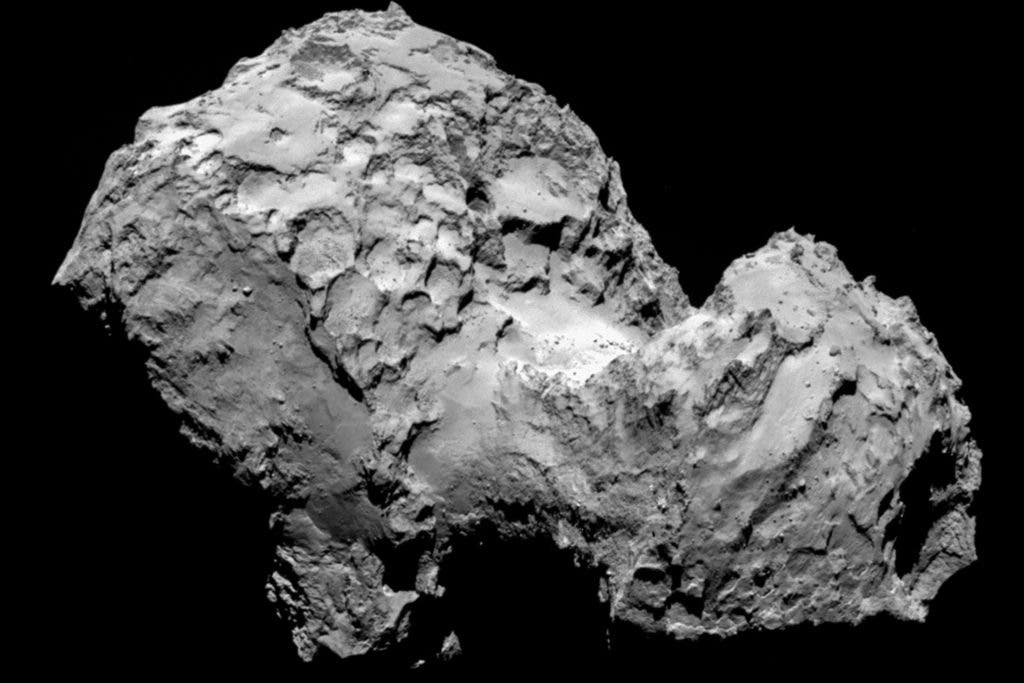Yesterday, we presented an article in which we detailed the claims of two astronomers, Director of the Buckingham Centre for Astrobiology professor Chandra Wickramasinghe and his colleague Dr Max Wallis from the University of Cardiff; they proposed that Rosetta’s lander Philae may have actually landed on an inhabited comet – as the black slime on the surface suggests. However, the rest of the astronomical community has been vocal in contesting these claims.

The Rosetta Probe is trailing 67P/Churyumov-Gerasimenko, and the Philae lander has woken up from its slumber on the comet and started transmitting once again. Upon analyzing the images and running some computer simulations, Wallis and Wickramasinghe came to the conclusion that the dark slime on the surface of the comet could be a result of microbial activity – but not everyone agrees (to put it mildly).
“No scientist active in any of the Rosetta instrument science teams assumes the presence of living micro-organisms beneath the cometary surface crust,” Uwe Meierhenrich of Université Nice Sophia Antipolis, France, reportedly told The Guardian in an email exchange on Monday afternoon.
Meierhenrich serves as a co-investigator on Philae’s COSAC instrument, which was designed to chemically analyse the comet. According to him, comet’s black surface crust was predicted all the way back in 1986 by J. Mayo Greenberg (Nature 321, 385), who calculated what would happen to organic, non-living molecules struck by cosmic rays and light.
“These explanations seem to be valid, also with regard to new data of the cometary Rosetta mission,” wrote Meierhenrich.
So not only do we have a perfectly rational explanation that doesn’t involve alien life on a comet, but we have an explanation that was proposed since the 1980s. Several prominent astronomers were vocal and
“I think it is highly unlikely,” Professor Monica Grady of the Open University told the paper. Grady helped design the stunningly sophisticated Ptolemy instrument carried by Philae, Rosetta’s lander.
Furthermore, according to members working on the Rosetta mission, if life were actually present on the comet, we would actually be able to pick it up. COSAC and the PTOLEMY instrument on Philae could measure levels of chemicals associated with living organisms.
“We can thereby well distinguish between the biological and astrochemical formation of organics,” wrote Meierhenrich.
Some scientists were a bit more firm in their statements. Professor Dave Rothery of the Open University posted in a comment on Facebook:
“The Guardian and the RAS disgraced themselves today with the ‘top scientists’ argue case for life on comet’ piece today. I’ve just sat through the talk behind the press release and I think it fair to say that the audience was polite but entirely unconvinced. Diatoms [a type of micro-organism] in comets, my arse!”


